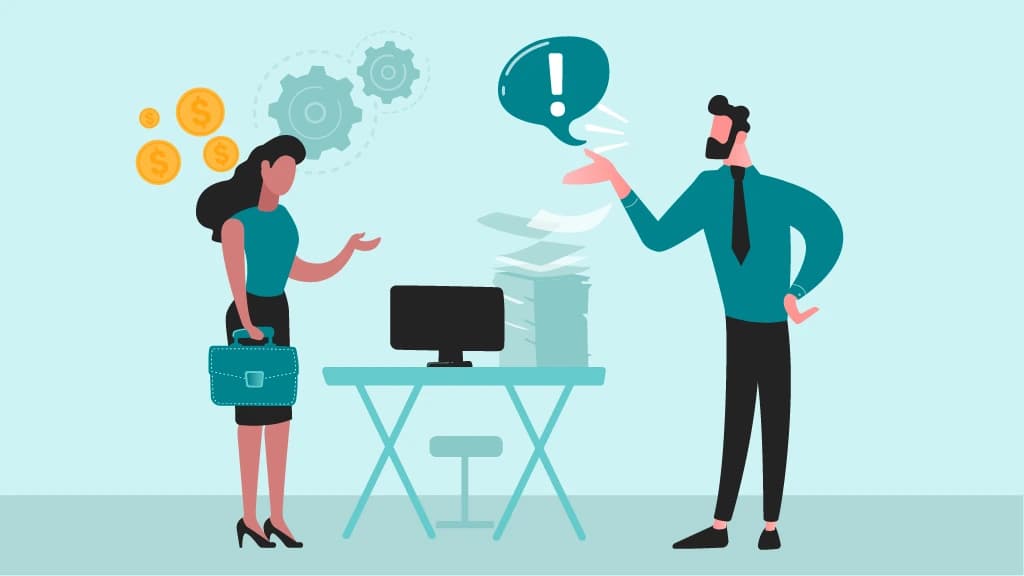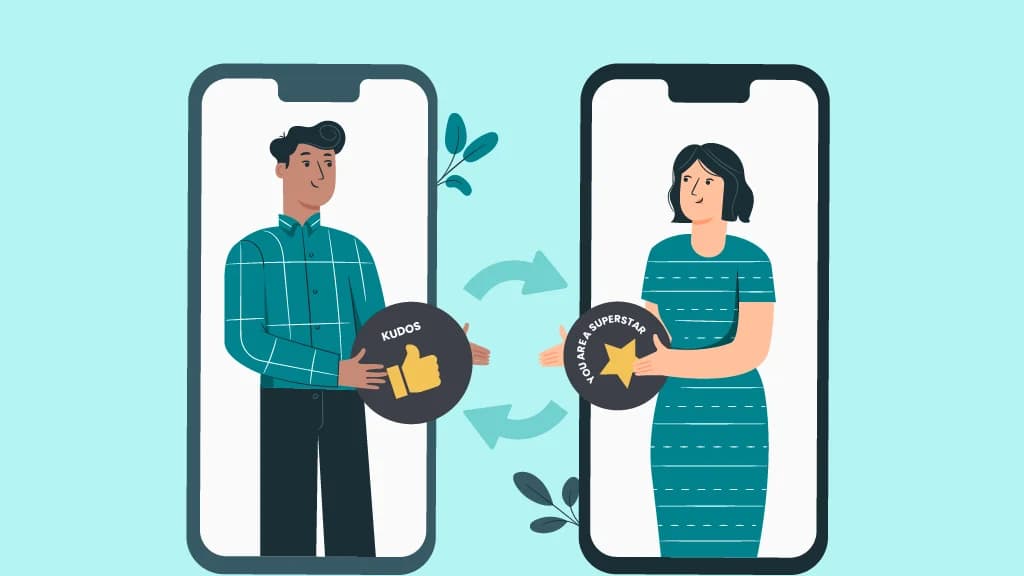
Employee reward systems are not just about perks or bonuses—they’re about showing people their efforts matter. A thoughtful employee reward system blends financial incentives, recognition, and opportunities for growth, helping employees feel genuinely valued and motivated to give their best.
Today’s reward systems for employees go beyond paychecks. They include everything from performance bonuses and gift cards to flexible schedules, mentorship, and learning opportunities. When these types of employee rewards are tied to company goals, recognition becomes consistent, authentic, and something people can truly connect with.
The benefits of rewarding employees ripple far beyond individual performance. Fair and transparent reward systems in the workplace foster trust, collaboration, and long-term loyalty. In many ways, strong employee rewards systems turn recognition into a culture—one where people are proud to contribute and businesses thrive as a result.
What is an Employee Reward System & Why Is It Important?
An employee reward system is a way of saying “thank you” to your employees for their hard work. This involves monetary and other fantastic rewards that make employees feel happy & satisfied. The reward system will boost employees’ morale, allowing them to stay longer and aligning rewards with the company’s goals.
Why it matters
- Motivates Employees to Work Harder: When rewarded, they become joyful and want to work better.
- Retains Employees in the Company: Saying "good job" and rewarding your employees retains them longer.
- Makes the Working Environment Happy: When employees feel valued, they become happy and, overall enhance the working environment.
- Motivates Good Work: When employees are assured they will be rewarded, they try their best to deliver a good job.
Key Components of an Effective Employee Reward System
- Performance-based monetary incentive: Cash incentives like bonuses, overtime pay, and raises for good performance.
- Non-Monetary Rewards: Simply saying “well done,” offering extra holidays, or helping employees learn new things can make them feel happy and valued.
- Team Rewards: If a team works well together, they also deserve rewards. This ensures that everyone feels like a team and collaborates more effectively.
- Fair and Personal Rewards: The ideal benefits are people-centered and distributed equally & in a fair manner.
6 Types of Employee Reward Systems
- Monetary Rewards: These rewards give more money to workers to make them happy. They are bonuses, profit sharing, free company shares, or higher pay. It keeps them retained in the firm for a longer period.
- Non-Monetary Rewards: They do not provide extra money but give special treatment to the employees. Some of the examples are complimenting publicly, allowing employees to do tasks in their own way, teaching them something new, or allowing them to fix working hours.
- Intrinsic Rewards: Intrinsic rewards enable workers to be happy from inside. They feel elevated, gain new knowledge, and realize their work matters. These rewards boost employee morale and ultimately lead to their growth.
- Extrinsic Rewards: These rewards are given from a source outside office. These can include pay raises, improved job levels, or even rewards such as gadgets or vouchers.
- Individual Rewards: These rewards are designed for personalized wins of employees. It makes them proud and work even more hard. They celebrate personal milestones or achievements to make employees work even harder.
- Team Rewards: These rewards are awarded to the entire team when they work effectively as a team. It makes workers support one another and be satisfied as a team.
How Reward Systems Empower and Motivate Employees
Functions of a Reward System for Employees
- Strengthening Behavior: A good reward system tells employees what actions matter and is expected by the company. It makes them do the right things repeatedly, and they get good at what they do.
Increasing Retention and - Attraction: Good rewards are good for employees’ morale and lead to greater longevity. A good reward system also attracts new employees who desire the same rewards.
- Giving Performance Feedback: Rewards enable the employees to know how they are performing. From this, they know what they do best and what they should improve on.
- Increasing Motivation: Being rewarded makes employees proud and motivated. This encourages them to work even more and perform their best daily.
Improving Cultural - Alignment: Rewards can be aligned with the company’s objectives and values. This makes everyone work towards one great vision.
The Role of Leadership and HR in Reward Systems
- Leaders Should Assist: The big bosses must ensure that there is an effective reward system in place. They need to practice what they preach. By doing this, workers will have faith and happiness in the system.
- HR Responsibility: Since the Hiring & HR team plans everything, the HR team defines the reward system. They determine the distribution of rewards and ensure that such carefully evaluated rewards are distributed fairly. The system enables workers to perform their work better and feel good about it.
- Talk About It Clearly: Employees must understand how the reward system operates. Managers and HR must simplify it. When employees get it, they will be excited and perform better. Simple explanations make employees believe in the system and remain happy.
Role of Technology & Recognition Platforms
- Automation: The technology provides the rewards instantly, so managers and HR people don't have much to do.
- Data Analytics: Technology monitors employees' likes and whether the reward system operates appropriately.
- Real-time Feedback: Employees receive praise and feedback in real time, so they feel happy and motivated.
- Integration: The reward system gets integrated with other HR solutions so that everything will work nicely and flawlessly.
When Should You Implement an Employee Reward System?
A reward system is needed when:
- Many employees leave the company often.
- Workers feel unhappy or not excited about their jobs.
- Work is slow, and people are not doing their best.
- The company is growing, and more workers need to feel valued.
Building a Reward System in Organization: Implementation Guide
Designing a reward system for employees is more than deciding who gets a bonus at the end of the year. The employee engagement strategy requires structure, clarity, and alignment with your company’s values and goals. A well-implemented reward management system ensures that recognition is fair, consistent, and meaningful. Here’s a step-by-step framework to get it right:
Step 1: Assess Your Current Approach
- Review existing employee rewards systems to spot what’s working and what’s not.
- Identify gaps in the current reward system in organization—are some teams overlooked?
- Survey employees to understand preferences for different types of employee rewards.
Step 2: Design the Framework
- Set clear objectives for your reward systems in the workplace (e.g., improve retention, encourage innovation, or strengthen teamwork).
- Build a balanced mix of financial and non-financial rewards.
- Define transparent and fair criteria so employees know exactly how recognition is earned.
Step 3: Implement Technology
- Choose platforms that integrate with your HR tools and performance management system to track progress seamlessly.
- Integrate it with existing HR tools for smooth tracking and reporting.
- Train managers to use the reward system for employees consistently and effectively.
Step 4: Launch and Communicate
- Develop a communication plan to roll out the new employee recognition program.
- Explain clearly how the employee rewards system works and its benefits.
- Plan training workshops to show employees how to participate.
- Create feedback loops, surveys, check-ins, and updates, to keep the system relevant.
Benefits of Rewarding Employees: Impact on Workplace Performance
- Improved Employee Engagement: Makes employees happy and excited to work.
- Increased Productivity: Encourages employees to do their best.
- Better Retention Rates: Helps keep good employees from leaving.
- Positive Work Culture: Creates a friendly and supportive workplace.
Reward Systems in the Workplace: Best Practices and Examples
- Limited Budgets: Focus on meaningful rewards, even if they aren't money-based.
- Cultural Misalignment: Make sure rewards match the company's values.
- Lack of Clarity: Explain the reward system clearly so everyone understands.
- Communication Gaps: Use technology to keep everyone informed and updated.
Employee Reward Systems Examples Across Industries
Every industry applies employee reward systems a little differently, tailoring them to their culture, goals, and workforce needs. From tech companies fueling innovation to retailers motivating frontline teams, here’s how reward systems in the workplace come to life across sectors.
Technology Sector Reward Systems for Employees
- Innovation bonuses and patent recognition.
- Training budgets and skill-development stipends.
- Flexible work schedules.
- Stock option programs.
Retail Reward Systems in the Workplace
- Incentives for sales performance.
- Customer service recognition.
- Team-based rewards for store goals.
- Employee discount programs.
Healthcare Reward System in Organization
- Recognition for patient care excellence.
- Continuing education support.
- Peer-to-peer appreciation systems.
- Retention bonuses for long-term staff.
Employee Reward System ROI: Measuring Success
Designing a reward program is only half the job, the real test lies in measuring impact. A well-structured reward management platform provides data that shows whether recognition is boosting engagement, retention, and performance. Here’s how to track ROI and ensure your employee reward systems deliver lasting value.
Key Performance Indicators for Employee Reward Systems
- Retention and turnover rates.
- Engagement and satisfaction survey scores.
- Productivity metrics tied to reward systems for employees.
- Participation levels in the reward system in organization.
- Cost-per-recognition in the reward management system
ROI Calculation for Reward Management Systems
- Direct costs: bonuses, gift cards, technology fees.
- Indirect benefits: reduced hiring costs, higher output.
- Long-term gains: stronger employer brand, better motivation.
Benchmarking Your Employee Rewards System
- Compare against industry standards for reward systems in the workplace.
- Evaluate effectiveness of different types of employee rewards.
- Study how competitors are rewarding employees to stay competitive.
Last Thoughts
Employee reward systems make workplaces grow. When companies are concerned about their employees, employees become satisfied, perform better, and remain longer. Using tools like Agentic AI makes giving rewards fairly and smartly easier. An excellent reward system is not a genius concept; every business must apply it to survive and thrive.
Frequently Asked Questions About Employee Reward Systems
Q: What is the difference between employee reward systems and employee rewards systems?
A: Both describe structured programs for rewarding employees. The singular “employee reward system” refers to one framework, while “employee rewards systems” may cover multiple programs.
Q: How do reward systems for employees improve motivation?
A: A reward system for employees and motivation work hand in hand. When performance is clearly linked to recognition, employees feel valued and inspired to give their best.
Q: What are the most effective types of employee rewards?
A: The best types of employee rewards mix bonuses, recognition programs, career development, and flexible work arrangements.
Q: How do you measure the benefits of rewarding employees?
A: The benefits of rewarding employees are measured through surveys, retention data, performance improvements, and participation in the reward system in organization.
Q: What makes reward systems in the workplace successful?
A: Success comes from fairness, clear criteria, strong leadership support, and variety in rewards.
Q: How do you choose the right reward management system?
A: Select a reward management system based on budget, company size, HR integration needs, and employee preferences.






